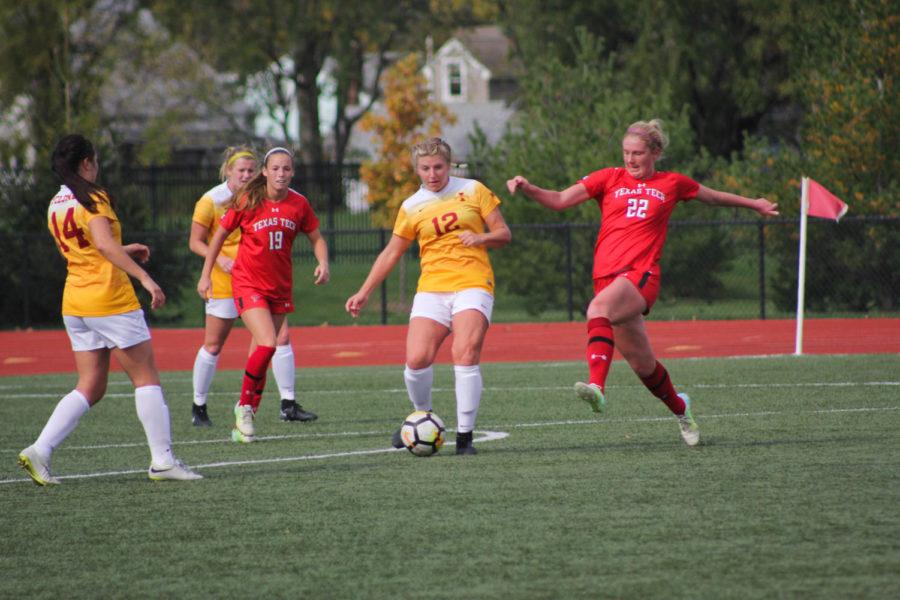Shaw: Single sport specialization is risky
Sophomore Kasey Opfer steals the ball from a player for Texas Tech during their match on October 22nd.
July 8, 2018
Getting kids involved in sports at an early age is a great way to help them burn off some energy and learn some valuable life lessons.
Sports can help kids understand the value of hard work through practice and perseverance. Many sports also help kids learn how to be team players, which can help them immensely in the real world.
Playing sports also has its drawbacks, though; injuries are often a part of any athlete’s experience. Additionally, sports are costly and can be too much of a financial burden for some families.
Kids often grow up hearing that professional athletes put countless hours into their sport to get to where they are now. However, kids don’t realize how risky sports specialization is.
Athletes specializing in single sports from an early age especially struggle with injuries and increased financial burdens with highly skilled competition, in addition to a high risk of burnout.
From an early age, I started playing tennis and that was what my entire childhood was focused on. There were also two other kids I grew up playing tennis with and we happened to end up playing on the same high school tennis team together.
We all started on the varsity team during our freshman year and our team had a successful season due to the depth we had. It was not common for freshmen to make the varsity team. The fact we had three of us make varsity spoke volumes to the coaches about the heights we could achieve, or so they told us.
I looked forward to the day we became seniors and reached our full potential.
Unfortunately, that day never came. None of us ended up playing tennis during our senior year.
My friends that I grew up playing tennis with got burned out and quit before their junior year. I sustained an overuse injury that prevented me from playing for the last half of my junior year and made me decide not to play my senior year.
We all had similar backgrounds: We only played tennis, our parents both played tennis and we started at an early age.
Some might see that as a recipe for success, however, it proved to be more of a recipe for disaster.
“Athletes who specialized in one sport were twice as likely to report previously sustaining a lower-extremity injury while participating in sports (46 percent) than athletes who did not specialize (24 percent),” according to a 2015-2016 National Federation of State High School Associations (NFHS) study.
I understand the desire to be exceptional at something. In the short term, it makes sense to devote all of your attention to that one activity. However, in the long run it’s important to take breaks to avoid some of these potential drawbacks.
An alternative to single sport specialization is getting involved in multiple sports.
When playing multiple sports, young athletes can work on different muscle groups while still improving on fundamental skills like hand-eye coordination, strength, agility and endurance. Playing multiple sports also has mental benefits because it helps young athletes stay fresh by not getting burned out by playing one sport the entire year.
“If less than seven percent of high school athletes move on to college sports (and only three percent earn an athletic scholarship), we need to focus our programming on the other 93 percent of our participants,” according to an NFHS article titled “The importance of multi sport participation.”
For those not moving on to college sports, there is no need for single sport specialization and no need for the overuse injuries and burnout that comes with it.
We need to promote the benefits of playing multiple sports and taking breaks from sports training so that kids won’t have to suffer through the potential physical and or mental breakdowns that come with single sports specialization from an early age.







